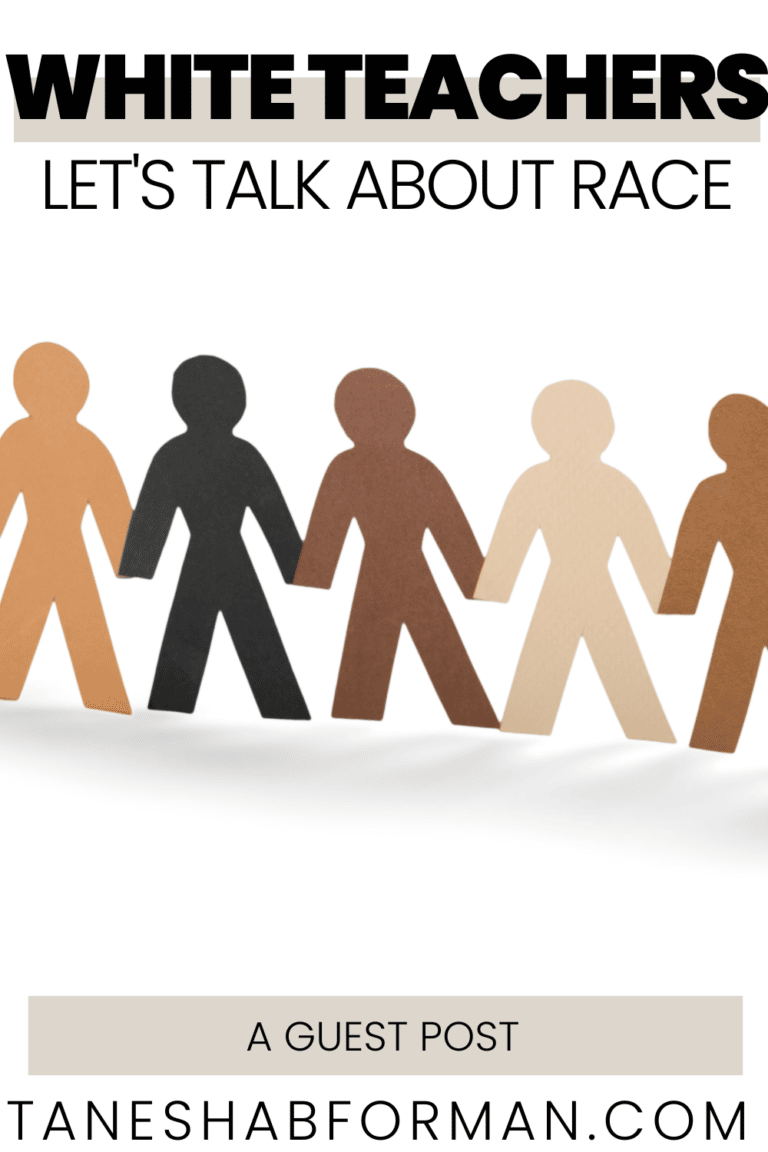
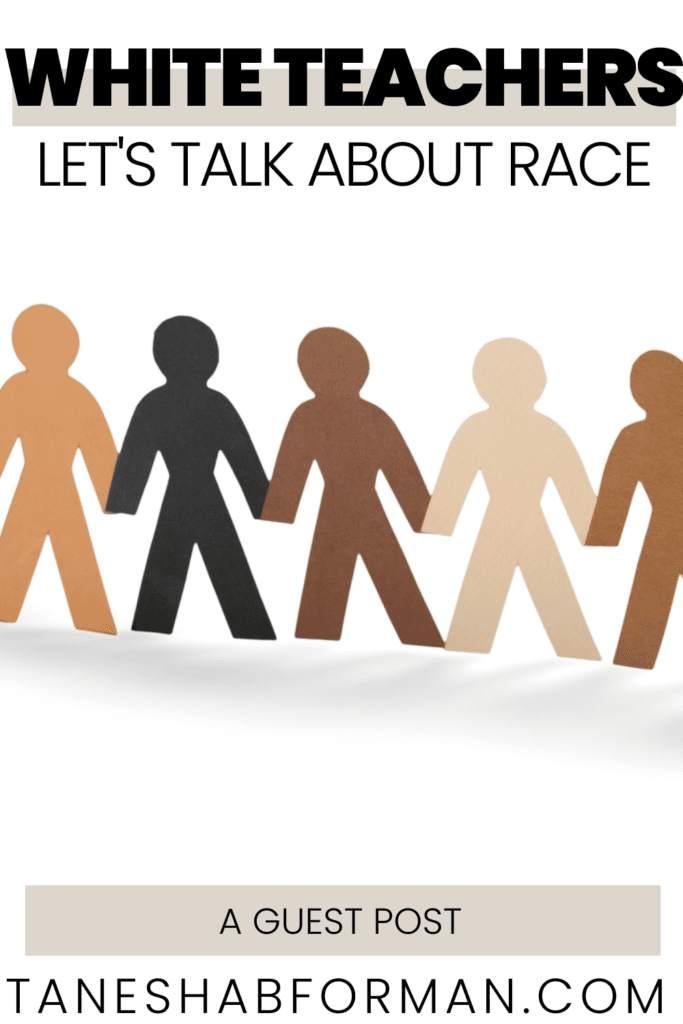
White Teachers: Let’s Talk About Race…NOW!
Guest Post: This post was written by a colleague, Jeff Reamer who shares my passion for real talk! He’s also willing to share additional resources and/or context. Please keep the conversation going in the comments!
I was once at a professional development in which a group of predominantly white teachers was discussing the importance of academic English proficiency for students of color. Many teachers mentioned access to opportunity; others discussed college readiness. At one point, a white teacher stood up and said with a laugh, “Sure, kids need to know how to use proper English in order to be successful in school, but they also need to know that this is just how you speak in polite company!”
I was struck with what this mindset meant for the students in this teachers class. I’m sure the teacher believed they were saying something humorous or helpful (at the very least, neutral), when, in fact, they had committed an act of racialized aggression, aimed directly at the students they teach every day.
And we all do it. Alarmingly often.
For white teachers, the impact of our racial blind spots on our students’ relationship with school is heavy. White teachers who do not work to understand race and privilege, and discuss how these realities play out in their classrooms, almost certainly alienate, hurt and invalidate the experiences of students of color that sit before them each day. Young people notice this, even when we don’t, and the consequences are clear; the failure of our schools to provide a meaningful education for so many students of color speaks for itself. Public schools are predominantly white institutions into which filter most of our country’s Black and Brown students: we need to do the work, and we need to do it now.
Here are some ways to get started.
Do your own work first. Bringing race and privilege into your classroom begins, unequivocally, with you working on your own racial identity. The power differential that exists between a white teacher and students of color is mostly invisible to a teacher who hasn’t exerted enormous effort into unearthing what it means to be white. For example, in a literature class, it is easy for a white teacher to refer to academic English as “proper” or “correct” English. It is also easy to levy a judgement against words that have different meanings in different contexts as “wrong” or the student who uses them as “inarticulate.” Imagine, in whatever limited way you can, what it might feel like to hear that the Spanish your family speaks at home is somehow “improper,” or the patois that your mother speaks is “impolite.” It is invalidating, it signals “you don’t belong here,” and it happens all the time. Which brings me to my next point…
Learn to talk about coding. In this country, powerful white institutions (such a colleges) are comfortable with one iteration of English: academic English (sometimes insidiously referred to as proper English). This language is assigned power in our society largely because of its association with the white middle class. This does not mean, however, it is any more valid or complex than any other form of English (or any other language spoken in this country, for that matter). So, learn to recognize the beauty in other forms of English and languages that are not your own, and embrace that, despite not having equal power, they are equally meaningful. An example:
Teacher: What is Lysander doing in this section of the text?
Ky: He’s finessing Hermia. He says, “One turf shall serve as pillow for us both.” He’s trying to get with her.
Teacher: Solid evidence. Now translate “finessing” and “get with her” into academic English.
Ky: Um. He’s testing his limits with her…to see if he can become romantically involved? And she denies him.
Teacher: Ooh. I like it. You could also say, “She rebuffed his advances.” Rebuffed means denied in a context like this one.
Pay attention to language here – Ky is translating one English into another; his ideas are right from the start (and his expression of them emotionally satisfying), and he then simply translates them into a code he can use in another context. This is bound to lead to some giggles, and some exaggerated “white-sounding” formality at times. Relax. It’s fine.
Listen to students, especially when what you hear makes you uncomfortable. Then engage. In the same unit from which I pulled the earlier dialogue, I try as hard as possible to find examples of actors of color cast in Midsummer Night’s Dream. Problematically, the only readily available video recording of this play features an all-white cast. Kids notice immediately, and to explain away this iteration of racism in the name of academic expediency is to invalidate the pain this lack of representation can cause for many of my students.
It is therefore my job to engage with this valid criticism as valid, and counteract that reality as best as I can.* First, we spend time criticizing the portrayal of these characters (which are not given any physical descriptions in the original text) as all white. Then, we reimagine. Students are free to interpret the text in any way they choose (as long as it stays true to the Shakespearean language we are learning) after first reading and seeing scenes. This has yielded incredible iterations of the famous Hermia and Helena fight scenes (one of my favorites featured two students reimagining this fight as one their Trinidadian aunts would have).
*Note: This is not a replacement for representation of authors of color in curriculum.
Seek out your own resources. In your attempt to increase your cultural competency as a teacher, figure it out yourself. Or, rather, amongst yourselves. It is not the job of your students of color to “teach you how to teach them,” nor does that responsibility fall on teachers of color on your staff. It is our responsibility to figure this out. The internet has given us easy access to books by authors like Christopher Emdin, Lisa Delpit, Dr. Beverly Tatum and Jay Gillen; you can also get some great resources from Teach4Real or The Algebra Project.You can look in your area or in your organization for white racial justice affinity groups. Or, start your own. This seems like a lot of work because it is. One of my favorite thinkers in education, Jeff Duncan-Andrade, often says something to the effect of, “It took white people hundreds of years hard work to create this mess; it’s going to take a lot of hard work to get out of it.”
Embrace the struggle.A word of warning to all you would-be warriors out there: at times, this will feel unbearably messy, and we need to learn to let ego go. One of the side effects of welcoming conversations about race and privilege into your classroom is that kids will explore your responses to a set of ideas that they may have seen as off-limits in school (or at least in white teachers’ classrooms). For example, when you explain coding and engage with it for the first time, students may press you with difficult-to-answer (but fair) questions about you and your whiteness.
Sometimes (a lot of the times, at first), you’ll get it wrong. And that’s only ok if you commit to doing better next time. The students in your room cannot afford to have you recoil because you were made to feel uncomfortable – uncomfortable moments are not the plan backfiring. In some ways, they mean the plan is at least starting to work.
Whatever you do, do something, and do it now. The consequences of white teachers keeping conversations about race and diversity out of our classrooms are dire. For so many students, it makes school irreconcilable with their daily lives, with what they see on the news, and with what they hear in their communities. School becomes a place in which students feel unwelcome. For some, it is a hostile attack on their cultural identities. It takes work for us to understand this because we do not experience this as white people. However, underlying our job descriptions as white teachers is a responsibility to learn how to embrace discussions about race, even when it feels like it would be easier not to.

PIN FOR LATER!
JOIN THE COLLECTIVE
Sign up and access the FREE resources to support your Anti-Bias/Anti-Racism journey.

Tanesha B. Forman
I'm a current middle school administrator who loves breaking down complex topics and providing opportunities for educators learn, reflect, practice, and implement methods that foster equity and anti-racism. I believe we win together!
Behind the Blog


Hi, I'm Tanesha.
I’m a current middle school administrator who loves breaking down complex topics and providing opportunities for educators learn, reflect, practice, and implement methods that foster equity and anti-racism. I believe we win together!








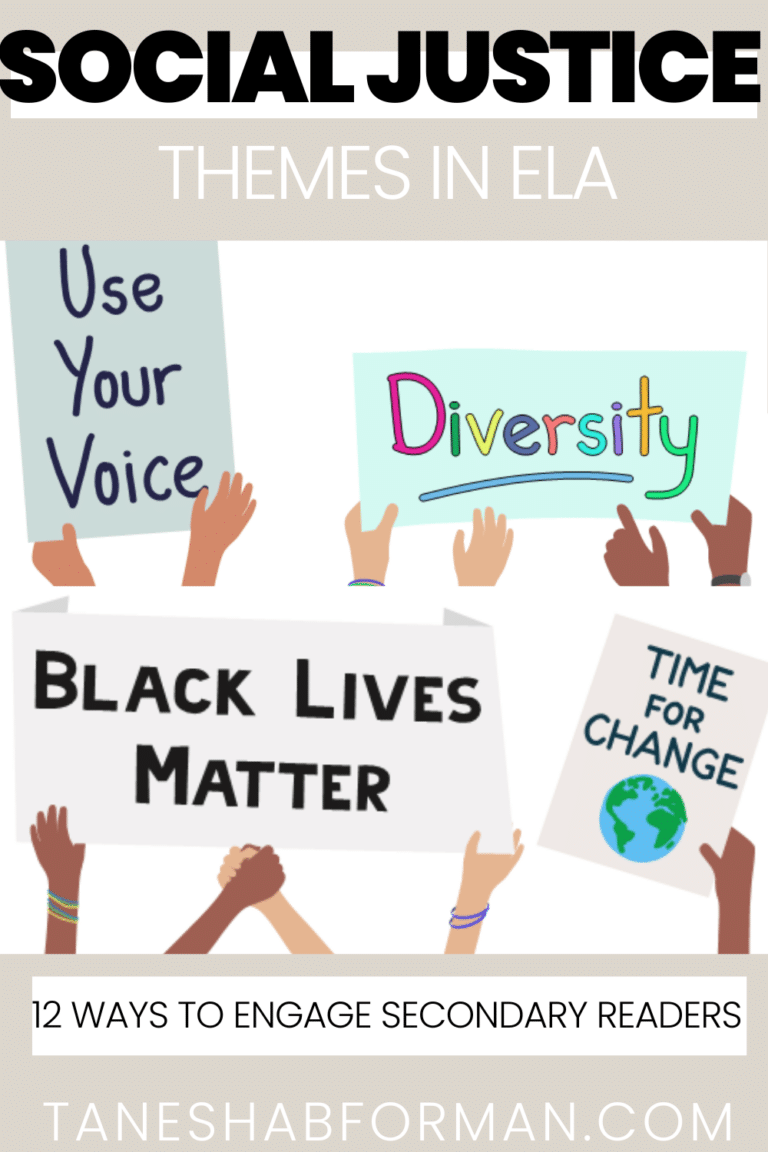
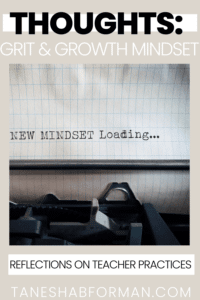
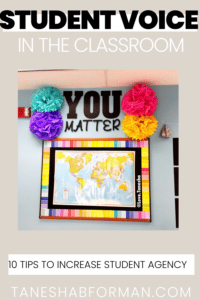
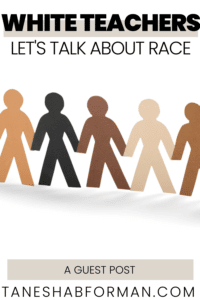
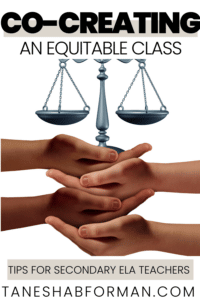

2 thoughts on “White Teachers: Let’s Talk About Race…NOW!”
This post is spot on. Until white teachers start acknowledging their privleage, we will continue to be where we are. Also, I love that this post mentioned that it is not a POC's job to guide white teachers along the way. It's time to roll up our sleeves, get uncomfortable, have conversations that we might falter through and do this hard work.
White teachers need to open up this dialogue with other white teachers, it's our responsibility. Time to examine our own bias and make a change.
Unbearably messy is right! I've had some conversations about race with my students that have left me feeling really uncomfortable, and not sure at all that I said the right thing or that it was in any way a good conversation to have. I've had other teachers ask me how I even get into these conversations with students– I do think it's positive that students are willing to talk to me about race, but in the short-term, it's certainly easier for white teachers to message that it's unacceptable to talk about, just so they don't have to deal with the discomfort. I work with younger students (4th grade and below), but many of them are already seeing and internalizing so much more than I realize. Even though I think of myself a relatively racially-conscious teacher, I was shocked when a group of third graders told me that all the white teachers hate them, and treat the "Mexican" students better. My school is extremely diverse and about 35% black and 60% latinx. I realized then, that on some level, I thought of all of them as "not white," and didn't realize the extent of the racial tension between groups at the school. The students had all these specific incidents in which they felt they had been treated unfairly. Most of them I knew not to be directly racially motivated, but they certainly had observed something real about how the bilingual classes vs. monolingual classes are treated at my school. Generally I think having bilingual classes is great, but at my school, I've realized that students see it as segregation. Anyway, thank you for this post, and thank you for acknowledging that it's not an easy process or a comfortable one.